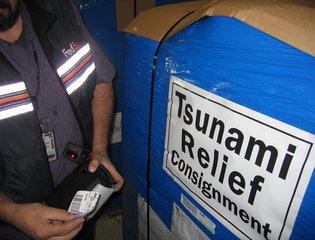As the humanitarian system commemorates the 20th anniversary of the Indian Ocean tsunami, we believe the humanitarian sector has an obligation to reflect on the lessons learned two decades ago. What changes in crisis response have been implemented since? What still needs improvement? Join the conversation!
"Many of the issues [identified by the TEC] were already on the table. But it gave fuel to these agendas."
Niels Dabelstein, former Head of the Evaluation Department of Danida, Vice Chair of the DAC Evaluation Group and member of the TEC Core Management Group
The 4 areas of progress
Since the Tsunami Evaluation Coalition report was published in 2006, the humanitarian system has implemented reforms that address some of the biggest problems it identified.
Improving the quality and consistency of humanitarian assistance
The TEC evaluation pointed out inconsistencies in the quality of humanitarian assistance across different regions and sectors. It recommended establishing a voluntary or more formal certification and accreditation system for international humanitarian aid actors.
What has been achieved?
In 2014, the Core Humanitarian Standard was set up to provide a voluntary but formal mechanism for organisations to align their practices with recognised quality benchmarks.
Lessons from the TEC also informed subsequent updates to the The Sphere Standards handbook which was first published in 2005.
Better coordination
The TEC identified that the lack of coordination between governments, NGOs, international organisations, and UN agencies was a major challenge in the response. This often led to duplication of efforts, missed opportunities, and inefficient use of resources.
As a result, the Cluster Approach was formally rolled out by the UN in 2005. It remains the primary way that the humanitarian system organises itself by specific area of disaster response.
More needs-based responses
The TEC evaluation found that aid was sometimes driven by donor priorities rather than the actual needs of the affected people. Some types of aid were inappropriate for the context, and in some cases, aid was delivered unevenly, leaving certain communities underserved.
How has this been addressed?
Established in 2020, the Joint Intersectoral Analysis Framework (JIAF) now provides a structured approach to assessing and analysing needs through data-driven, context-specific and intersectoral analysis, ensuring that aid responds to those needs.
More investment into disaster risk reduction and preparedness
The tsunami highlighted the need for stronger disaster preparedness and risk reduction strategies in vulnerable regions. The evaluation noted that many affected countries were ill-prepared for such a large-scale disaster, and the early warning systems in place were inadequate.
The Sendai Framework for Disaster Risk Reduction (2015-2030) is one example of many efforts made since the 2004 tsunami to promote investment in infrastructure, early warning systems, and community training to mitigate the impact of future disasters.
While still a relatively new area for the humanitarian sector, anticipatory action has gained steam in recent years, in large part due to increasing climate-related disasters.
Where is the humanitarian system still stuck?
Despite welcome improvements that have resulted from the reforms above, there are still key areas where the humanitarian sector seems to remain stubbornly resistent to change.
"How money is allocated has less to do with the nature and scale of crisis. It has to do with geopolitical considerations. That learning still hasn’t changed."
Mihir Bhatt, Director, AIDMI and Deputy Lead, TEC
7 key issues that emerged 20 years ago from the Tsunami Evaluation Coalition which still resonate today
The international community repeatedly descends into crisis settings in large numbers, often leaving communities it aims to support undermined. There remains a tremendous need to improve by supporting and facilitating communities’ own relief and recovery efforts, working collaboratively with national counterparts and structures.
Source: Impact of the Tsunami Response on Local and National Capacities
The humanitarian community can do more to provide ongoing support to national and local preparedness measures at country level.
Source: Links between relief, rehabilitation and development in the tsunami response, July 2006
Donors often took funding decisions based on political calculation and media pressure. This system produces an uneven and unfair flow of funds for emergencies that neither encourages investment in capacity nor responses that are proportionate to need. We need an improved system of decision making based on humanitarian principles.
Source: Funding the tsunami response, July 2006
More transparency is needed to understand how humanitarian funds flow from original donor to actual people requiring support, documenting each layer, the transaction costs and added values.
Source: Funding the tsunami response, July 2006
More weight should be given to humanitarian assessments in influencing policy and donor decision making, rather than being led by mass media, geopolitical choices, or public pressure.
Source: The role of needs assessment in the tsunami response, July 2006
People affected by crises view their recovery and rehabilitation through a lens in which social, economic, environmental, cultural and political realities converge. Narrow project-focused humanitarian responses ignore the lived reality of people living through crisis.
Source: Links between relief, rehabilitation and development in the tsunami response, July 2006
Humanitarian agencies need to engage with community-based and local non-governmental organisations from the start to the end of relief and recovery programmes.
Source: Impact of the Tsunami Response on Local and National Capacities, July 2006
Which of these challenges most resonate with you? Are there examples where little-highlighted progress is being made? And what will it take to move reforms forward?
What are your views? Share them with us by emailing us at: [email protected].
We want your help to understand how the sector can reinvigorate collective learning to address the 'sticking points' in humanitarian reforms.




